Multifunctional, Flexible, Electrospun Lignin/PLA Micro/Nanofiber Mats from Softwood Kraft, Hardwood Alcell, and Switchgrass CELF Lignin
Abstract
Highlights
- Lignin origin, isolation method, and fraction significantly influence fiber properties of electrospun 1:1 lignin/PLA micro/nanofibers, including spinnability, morphology, mechanical strength, thermal behavior, hydrophobicity, and antioxidant activity.
- Fractionation is not essential for fiber formation, but it enables tailoring of fiber properties to achieve targeted performance characteristics
- Lignin/PLA fiber mats can be customized for diverse functionality: in this study, SGL/PLA demonstrated suitability for air filtration systems, KL/PLA for wound dressings or cosmetic care, and Alcell/PLA for packaging applications.
- Efficient, low-cost production of functional biocomposite micro/nanofibers is feasible, supporting sustainable material development without complex processing, while enabling targeted performance through selective lignin use or fractionation
Abstract
1. Introduction
2. Materials and Methods
2.1. Materials
2.2. Fractionation
2.3. Suspension Preparation
2.4. Electrospinning
2.5. Scanning Electron Microscopy (SEM) Analysis
2.6. Fiber Diameter Measurement
2.7. Attenuated Total Reflectance (ATR)—Fourier-Transform Infrared Spectroscopy (FTIR)
2.8. Differential Scanning Calorimetry (DSC)
2.9. Characterization of Mechanical Properties
2.10. Contact Angle Analysis
2.11. Antioxidant Activity
2.12. Statistical Analysis
3. Results
3.1. Chemical Structure (FTIR)
3.2. Fiber Diameter, Distribution and Morphology
3.3. Thermal Properties (DSC)
3.4. Mechanical Properties (DMA)
3.5. Contact Angle
3.6. Antioxidant Properties
4. Conclusions
- (1)
- Lignin addition to PLA in biocomposite fiber mats resulted in increased electrical conductivity and fiber diameter, reduced tensile strength, elongation at break, and thermal transition temperature, as well as increased hydrophobicity, with the latter showing a correlation with the Tg.
- (2)
- Thermal properties of lignin/PLA samples were influenced by the hydroxyl content in lignin and inversely related to its degree of crosslinking. However, thermal values showed minimal variance across samples after lignin addition.
- (3)
- Mechanical properties greatly varied by lignin type.
- (4)
- While antioxidant activity was strong in all samples, it was highest in KL and its fractions due to the highly alkaline conditions in Kraft pulping, which correlated with phenolic OH content and, inversely, with the S/G ratio.
- (5)
- KL/PLA and its fractions, EIKL/PLA and ASKL/PLA, exhibited high hydrophobicity, while KL/PLA and EIKL/PLA also showed high tensile strength; ASKL/PLA was characterized by a small fiber diameter, and the ESKL/PLA suspension had the highest electrical conductivity.
- (6)
- SGL/PLA showed a small fiber diameter, as well as the highest tensile strength, coupled with a moderate modulus and elongation.
- (7)
- Alcell/PLA samples showed the largest fiber diameters, with ALE60/PLA exhibiting the lowest elongation at break and the highest Young’s modulus, as well as the highest hydrophobicity, followed closely by ALE100ins/PLA, which also had the lowest conductivity in the suspension of all samples.
Supplementary Materials
Author Contributions
Funding
Data Availability Statement
Acknowledgments
Conflicts of Interest
Abbreviations
| CELF | Co-solvent Enhanced Lignocellulosic Fractionation |
| AIKL | Acetone-Fractionated Insoluble Kraft Lignin |
| ALE40 | Alcell (40%) Ethanol-Soluble Lignin |
| ALE60 | Alcell (60%) Ethanol-Soluble Lignin |
| ALE100 | Alcell (100%) Ethanol-Soluble Lignin |
| ALE100Ins | Alcell (100%) Ethanol-Insoluble Lignin |
| ASKL | Acetone-Fractionated Soluble Kraft Lignin |
| DCM | Dichloromethane |
| DMA | Dynamic Mechanical Analysis |
| DMF | N,N-dimethyl formamide |
| DPPH | 2,2-Diphenyl-1-picrylhydrazyl |
| DSC | Differential Scanning Calorimetry |
| EIKL | Ethanol-Fractionated Insoluble Kraft Lignin |
| ESKL | Ethanol-Fractionated Soluble Kraft Lignin |
| EtOH | Ethanol |
| FTIR | Fourier Transform Infrared Spectroscopy |
| G UNIT | Guaiacyl |
| H UNIT | p-hydroxyphenyl |
| PLA | polylactic acid |
| SGL | switchgrass lignin |
| S UNIT | syringyl |
References
- Sharma, S.; Sharma, A.; Mulla, S.I.; Pant, D.; Sharma, T.; Kumar, A. Lignin as Potent Industrial Biopolymer: An Introduction. In Lignin: Biosynthesis and Transformation for Industrial Applications; Springer: Cham, Switzerland, 2020; pp. 1–15. [Google Scholar] [CrossRef]
- Ayyachamy, M.; Cliffe, F.E.; Coyne, J.M.; Collier, J.; Tuohy, M.G. Lignin: Untapped biopolymers in biomass conversion technologies. Biomass Convers. Biorefinery 2013, 3, 255–269. [Google Scholar] [CrossRef]
- Sameni, J.; Krigstin, S.; Sain, M. Solubility of Lignin and Acetylated Lignin in Organic Solvents. Bioresources 2017, 12, 1548–1565. [Google Scholar] [CrossRef]
- Wang, S.; Bai, J.; Innocent, M.T.; Wang, Q.; Xiang, H.; Tang, J.; Zhu, M. Lignin-based carbon fibers: Formation, modification and potential applications. Green Energy Environ. 2022, 7, 578–605. [Google Scholar] [CrossRef]
- Choi, J.-H.; Cho, S.-M.; Kim, J.-C.; Park, S.-W.; Cho, Y.-M.; Koo, B.; Kwak, H.W.; Choi, I.-G. Thermal Properties of Ethanol Organosolv Lignin Depending on Its Structure. ACS Omega 2021, 6, 1534–1546. [Google Scholar] [CrossRef]
- Meng, X.; Bhagia, S.; Wang, Y.; Zhou, Y.; Pu, Y.; Dunlap, J.R.; Shuai, L.; Ragauskas, A.J.; Yoo, C.G. Effects of the advanced organosolv pretreatment strategies on structural properties of woody biomass. Ind. Crop. Prod. 2020, 146, 112144. [Google Scholar] [CrossRef]
- Wang, Y.-Y.; Sengupta, P.; Scheidemantle, B.; Pu, Y.; Wyman, C.E.; Cai, C.M.; Ragauskas, A.J. Effects of CELF Pretreatment Severity on Lignin Structure and the Lignin-Based Polyurethane Properties. Front. Energy Res. 2020, 8, 149. [Google Scholar] [CrossRef]
- Yong, K.J.; Wu, T.Y. Recent advances in the application of alcohols in extracting lignin with preserved β-O-4 content from lignocellulosic biomass. Bioresour. Technol. 2023, 384, 129238. [Google Scholar] [CrossRef]
- Gosselink, R.; Abächerli, A.; Semke, H.; Malherbe, R.; Käuper, P.; Nadif, A.; van Dam, J. Analytical protocols for characterisation of sulphur-free lignin. Ind. Crop. Prod. 2004, 19, 271–281. [Google Scholar] [CrossRef]
- Abdelaziz, O.Y.; Hulteberg, C.P. Physicochemical Characterisation of Technical Lignins for Their Potential Valorisation. Waste Biomass Valorization 2017, 8, 859–869. [Google Scholar] [CrossRef]
- Mariana, M.; Alfatah, T.; Abdul Khalil, H.P.S.; Yahya, E.B.; Olaiya, N.; Nuryawan, A.; Mistar, E.; Abdullah, C.; Abdulmadjid, S.; Ismail, H. A current advancement on the role of lignin as sustainable reinforcement material in biopolymeric blends. J. Mater. Res. Technol. 2021, 15, 2287–2316. [Google Scholar] [CrossRef]
- Yoo, C.G.; Ragauskas, A.J. Opportunities and Challenges of Lignin Utilization. In Lignin Utilization Strategies: From Processing to Applications; American Chemical Society: Washington, DC, USA, 2021; pp. 1–12. [Google Scholar] [CrossRef]
- Dallmeyer, I.; Ko, F.; Kadla, J.F. Correlation of Elongational Fluid Properties to Fiber Diameter in Electrospinning of Softwood Kraft Lignin Solutions. Ind. Eng. Chem. Res. 2014, 53, 2697–2705. [Google Scholar] [CrossRef]
- Xue, J.; Wu, T.; Dai, Y.; Xia, Y. Electrospinning and electrospun nanofibers: Methods, materials, and applications. Chem. Rev. 2019, 119, 5298–5415. [Google Scholar] [CrossRef] [PubMed]
- Dallmeyer, I.; Ko, F.; Kadla, J.F. Electrospinning of Technical Lignins for the Production of Fibrous Networks. J. Wood Chem. Technol. 2010, 30, 315–329. [Google Scholar] [CrossRef]
- Attia, A.A.M.; Abas, K.M.; Nada, A.A.A.; Shouman, M.A.H.; Šišková, A.O.; Mosnáček, J. Fabrication, Modification, and Characterization of Lignin-Based Electrospun Fibers Derived from Distinctive Biomass Sources. Polymers 2021, 13, 2277. [Google Scholar] [CrossRef] [PubMed]
- Poursorkhabi, V.; Mohanty, A.K.; Misra, M. Electrospinning of aqueous lignin/poly(ethylene oxide) complexes. J. Appl. Polym. Sci. 2015, 132, 41260. [Google Scholar] [CrossRef]
- Cintra, I.L.R.; Rezende, M.C.; Guerrini, L.M.; Nahra, L.R.; Lucas, R.R.; Montagna, L.S.; Botelho, E.C. Electrospinning of PAN/lignin blends aiming the production of carbon nanofibers. MRS Commun. 2023, 14, 82–89. [Google Scholar] [CrossRef]
- Gordobil, O.; Egüés, I.; Llano-Ponte, R.; Labidi, J. Physicochemical properties of PLA lignin blends. Polym. Degrad. Stab. 2014, 108, 330–338. [Google Scholar] [CrossRef]
- Casasola, R.; Thomas, N.L.; Trybala, A.; Georgiadou, S. Electrospun poly lactic acid (PLA) fibres: Effect of different solvent systems on fibre morphology and diameter. Polymer 2014, 55, 4728–4737. [Google Scholar] [CrossRef]
- Liang, R.; Yang, X.; Yew, P.Y.M.; Sugiarto, S.; Zhu, Q.; Zhao, J.; Loh, X.J.; Zheng, L.; Kai, D. PLA-lignin nanofibers as antioxidant biomaterials for cartilage regeneration and osteoarthritis treatment. J. Nanobiotechnol. 2022, 20, 327. [Google Scholar] [CrossRef]
- Kim, D.; Bahi, A.; Liu, L.-Y.; Bement, T.; Rogak, S.; Renneckar, S.; Ko, F.; Mehrkhodavandi, P. Poly(Lactide)-Modified Lignin Nanofibers: Investigating the Role of Polymer Tacticity on Fiber Properties and Filtration Efficiency. ACS Sustain. Chem. Eng. 2022, 10, 2772–2783. [Google Scholar] [CrossRef]
- Mushtaq, M.; Ahad, S.A.; Beaucamp, A.; Kumar, A.; Leite, M.M.; Hanrahan, J.P.; McGrath, J.; Singh, S.; Morris, M.A.; Geaney, H.; et al. Understanding the Importance of the Lignin–Biopolymer Ratio in Optimizing the Performance of Sustainable Biomass-Derived Electrospun Carbon Fiber Anodes in Sodium-Ion Batteries. ACS Appl. Energy Mater. 2025, 8, 8963–8972. [Google Scholar] [CrossRef]
- Culebras, M.; Geaney, H.; Beaucamp, A.; Upadhyaya, P.; Dalton, E.; Ryan, K.M.; Collins, M.N. Bio-derived Carbon Nanofibres from Lignin as High-Performance Li-Ion Anode Materials. ChemSusChem 2019, 12, 4516–4521. [Google Scholar] [CrossRef]
- Li, Q.; Hu, C.; Li, M.; Truong, P.; Li, J.; Lin, H.-S.; Naik, M.T.; Xiang, S.; Jackson, B.E.; Kuo, W.; et al. Enhancing the multi-functional properties of renewable lignin carbon fibers via defining the structure–property relationship using different biomass feedstocks. Green Chem. 2021, 23, 3725–3739. [Google Scholar] [CrossRef]
- Karaaslan, M.A.; Cho, M.J.; Liu, L.Y.; Wang, H.; Renneckar, S. Refining the Properties of Softwood Kraft Lignin with Acetone: Effect of Solvent Fractionation on the Thermomechanical Behavior of Electrospun Fibers. ACS Sustain. Chem. Eng. 2021, 9, 458–470. [Google Scholar] [CrossRef]
- Wetcha, P.; Aussawasathien, D.; Srithongkam, S.; Sowasod, N.; Naewkanya, P.; Tanthapanichakoon, W. Development for preparation of nanofibers using polylactic acid and biomass lignin via electrospinning process. AIP Conf. Proc. 2022, 2440, 030011. [Google Scholar] [CrossRef]
- Ponnuchamy, V.; Gordobil, O.; Diaz, R.H.; Sandak, A.; Sandak, J. Fractionation of lignin using organic solvents: A combined experimental and theoretical study. Int. J. Biol. Macromol. 2021, 168, 792–805. [Google Scholar] [CrossRef] [PubMed]
- Boeriu, C.G.; Bravo, D.; Gosselink, R.J.A.; van Dam, J.E.G. Characterisation of structure-dependent functional properties of lignin with infrared spectroscopy. Ind. Crop. Prod. 2004, 20, 205–218. [Google Scholar] [CrossRef]
- del Río, J.C.; Gutiérrez, A.; Rodríguez, I.M.; Ibarra, D.; Martínez, Á.T. Composition of non-woody plant lignins and cinnamic acids by Py-GC/MS, Py/TMAH and FT-IR. J. Anal. Appl. Pyrolysis 2007, 79, 39–46. [Google Scholar] [CrossRef]
- Sammons, R.J.; Harper, D.P.; Labbé, N.; Bozell, J.J.; Elder, T.; Rials, T.G. Characterization of Organosolv Lignins using Thermal and FT-IR Spectroscopic Analysis. Bioresources 2013, 8, 2752–2767. [Google Scholar] [CrossRef]
- Popescu, C.-M.; Vasile, C.; Popescu, M.-C.; Singurel, G.; Popa, V.I.; Munteanu, B.S. Analytical methods for lignin characterization. II. Spectroscopic studies. Cellul. Chem. Technol. 2006, 40, 597–621. [Google Scholar]
- Liu, R.; Dai, L.; Xu, C.; Wang, K.; Zheng, C.; Si, C. Lignin-Based Micro- and Nanomaterials and their Composites in Biomedical Applications. ChemSusChem 2020, 13, 4266–4283. [Google Scholar] [CrossRef] [PubMed]
- Wang, Y.; Zhang, Y.; Cui, Q.; Feng, Y.; Xuan, J. Composition of Lignocellulose Hydrolysate in Different Biorefinery Strategies: Nutrients and Inhibitors. Molecules 2024, 29, 2275. [Google Scholar] [CrossRef] [PubMed]
- Gandolfi, S.; Ottolina, G.; Riva, S.; Fantoni, G.P.; Patel, I. Complete Chemical Analysis of Carmagnola Hemp Hurds and Structural Features of Its Components. Bioresources 2013, 8, 2641–2656. [Google Scholar] [CrossRef]
- de Souza Júnior, J.R.; Araujo, J.R.; Simão, R.A.; Archanjo, B.S. Cross-linked lignin coatings produced by uvlight and sf6 plasma treatments. In Ciência e Engenharia de Materiais: Conceitos, Fundamentos e Aplicação; Editora Científica Digital: Guarujá, Brazil, 2021; pp. 176–193. [Google Scholar] [CrossRef]
- El Mansouri, N.-E.; Salvadó, J. Analytical methods for determining functional groups in various technical lignins. Ind. Crop. Prod. 2007, 26, 116–124. [Google Scholar] [CrossRef]
- Jardim, J.M.; Hart, P.W.; Lucia, L.; Jameel, H. Insights into the Potential of Hardwood Kraft Lignin to Be a Green Platform Material for Emergence of the Biorefinery. Polymers 2020, 12, 1795. [Google Scholar] [CrossRef]
- Kubo, S.; Kadla, J.F. Hydrogen Bonding in Lignin: A Fourier Transform Infrared Model Compound Study. Biomacromolecules 2005, 6, 2815–2821. [Google Scholar] [CrossRef]
- Fiţigău, I.F.; Peter, F.; Boeriu, C.G. Structural Analysis of Lignins from Different Sources. J. Mater. Metall. Eng. 2013, 4, 167–172. [Google Scholar]
- Mishra, P.K.; Ekielski, A. The Self-Assembly of Lignin and Its Application in Nanoparticle Synthesis: A Short Review. Nanomaterials 2019, 9, 243. [Google Scholar] [CrossRef]
- Mann, D.G.J.; Labbé, N.; Sykes, R.W.; Gracom, K.; Kline, L.; Swamidoss, I.M.; Burris, J.N.; Davis, M.; Stewart, C.N. Rapid Assessment of Lignin Content and Structure in Switchgrass (Panicum virgatum L.) Grown Under Different Environmental Conditions. Bioenergy Res. 2009, 2, 246–256. [Google Scholar] [CrossRef]
- Liu, Y.; Carriero, S.; Pye, K.; Argyropoulos, D.S. A Comparison of the Structural Changes Occurring in Lignin during Alcell and Kraft Pulping of Hardwoods and Softwoods. In Lignin: Historical, Biological, and Materials Perspectives; ACS Publications: Washington, DC, USA, 1999; pp. 447–464. [Google Scholar] [CrossRef]
- Hosseinaei, O.; Harper, D.; Bozell, J.; Rials, T. Improving Processing and Performance of Pure Lignin Carbon Fibers through Hardwood and Herbaceous Lignin Blends. Int. J. Mol. Sci. 2017, 18, 1410. [Google Scholar] [CrossRef]
- Tan, S.-H.; Inai, R.; Kotaki, M.; Ramakrishna, S. Systematic parameter study for ultra-fine fiber fabrication via electrospinning process. Polymer 2005, 46, 6128–6134. [Google Scholar] [CrossRef]
- Attwenger, A. Value-Added Lignin Based Carbon Fiber from Organosolv Fractionation of Poplar and Switchgrass. Master’s Thesis, University of Tennessee, Knoxville, TN, USA, 2014. Available online: https://trace.tennessee.edu/utk_gradthes/2768 (accessed on 24 March 2025).
- Dastpak, A.; Louren, T.V.; Balakshin, M.; Hashmi, S.F.; Lundström, M.; Wilson, B.P. Solubility study of lignin in industrial organic solvents and investigation of electrochemical properties of spray-coated solutions. Ind. Crop. Prod. 2020, 148, 112310. [Google Scholar] [CrossRef]
- Lora, J.H.; Glasser, W.G. Recent Industrial Applications of Lignin: A Sustainable Alternative to Nonrenewable Materials. J. Polym. Environ. 2002, 10, 39–48. [Google Scholar] [CrossRef]
- Tanase-Opedal, M.; Ruwoldt, J. Organosolv Lignin as a Green Sizing Agent for Thermoformed Pulp Products. ACS Omega 2022, 7, 46583–46593. [Google Scholar] [CrossRef]
- Kadla, J.F.; Kubo, S. Lignin-based polymer blends: Analysis of intermolecular interactions in lignin–synthetic polymer blends. Compos. Part A Appl. Sci. Manuf. 2004, 35, 395–400. [Google Scholar] [CrossRef]
- Schlee, P.; Hosseinaei, O.; Keefe, C.A.O.; Mostazo-López, M.J.; Cazorla-Amorós, D.; Herou, S.; Tomani, P.; Grey, C.P.; Titirici, M.-M. Hardwood versus softwood Kraft lignin—Precursor-product relationships in the manufacture of porous carbon nanofibers for supercapacitors. J. Mater. Chem. A Mater. 2020, 8, 23543–23554. [Google Scholar] [CrossRef]
- Vural, D.; Smith, J.C.; Petridis, L. Dynamics of the lignin glass transition. Phys. Chem. Chem. Phys. 2018, 20, 20504–20512. [Google Scholar] [CrossRef]
- Sheridan, E.; Filonenko, S.; Volikov, A.; Sirviö, J.A.; Antonietti, M. A systematic study on the processes of lignin extraction and nanodispersion to control properties and functionality. Green Chem. 2024, 26, 2967–2984. [Google Scholar] [CrossRef]
- Tanase-Opedal, M.; Espinosa, E.; Rodríguez, A.; Chinga-Carrasco, G. Lignin: A Biopolymer from Forestry Biomass for Biocomposites and 3D Printing. Materials 2019, 12, 3006. [Google Scholar] [CrossRef]
- Kai, D.; Ren, W.; Tian, L.; Chee, P.L.; Liu, Y.; Ramakrishna, S.; Loh, X.J. Engineering Poly(lactide)-Lignin Nanofibers with Antioxidant Activity for Biomedical Application. ACS Sustain. Chem. Eng. 2016, 4, 5268–5276. [Google Scholar] [CrossRef]
- Arasi, A.R.B.K.; Bengtsson, J.; Haque, M.; Theliander, H.; Enoksson, P.; Lundgren, P. Influence of Hardwood Lignin Blending on the Electrical and Mechanical Properties of Cellulose Based Carbon Fibers. ACS Sustain. Chem. Eng. 2024, 12, 11206–11217. [Google Scholar] [CrossRef] [PubMed]
- El Mansouri, N.-E.; Yuan, Q.; Huang, F. Characterization of alkaline lignins for use in phenol-formaldehyde and epoxy resins. Bioresources 2011, 6, 2647–2662. [Google Scholar] [CrossRef]
- Suota, M.J.; da Silva, T.A.; Zawadzki, S.F.; Sassaki, G.L.; Hansel, F.A.; Paleologou, M.; Ramos, L.P. Chemical and structural characterization of hardwood and softwood LignoForceTM lignins. Ind. Crop. Prod. 2021, 173, 114138. [Google Scholar] [CrossRef]
- Anwer, M.A.S.; Naguib, H.E.; Celzard, A.; Fierro, V. Comparison of the thermal, dynamic mechanical and morphological properties of PLA-Lignin & PLA-Tannin particulate green composites. Compos. B Eng. 2015, 82, 92–99. [Google Scholar] [CrossRef]
- Guo, J.; Chen, X.; Wang, J.; He, Y.; Xie, H.; Zheng, Q. The influence of compatibility on the structure and properties of PLA/lignin biocomposites by chemical modification. Polymers 2020, 12, 56. [Google Scholar] [CrossRef]
- Shi, K.; Liu, G.; Sun, H.; Weng, Y. Polylactic Acid/Lignin Composites: A Review. Polymers 2023, 15, 2807. [Google Scholar] [CrossRef]
- Michelin, M.; Liebentritt, S.; Vicente, A.A.; Teixeira, J.A. Lignin from an integrated process consisting of liquid hot water and ethanol organosolv: Physicochemical and antioxidant properties. Int. J. Biol. Macromol. 2018, 120, 159–169. [Google Scholar] [CrossRef]
- Eugenio, M.E.; Martín-Sampedro, R.; Santos, J.I.; Wicklein, B.; Ibarra, D. Chemical, Thermal and Antioxidant Properties of Lignins Solubilized during Soda/AQ Pulping of Orange and Olive Tree Pruning Residues. Molecules 2021, 26, 3819. [Google Scholar] [CrossRef]
- Sadeghifar, H.; Argyropoulos, D.S. Correlations of the Antioxidant Properties of Softwood Kraft Lignin Fractions with the Thermal Stability of Its Blends with Polyethylene. ACS Sustain. Chem. Eng. 2015, 3, 349–356. [Google Scholar] [CrossRef]
- Dong, X.; Dong, M.; Lu, Y.; Turley, A.; Jin, T.; Wu, C. Antimicrobial and antioxidant activities of lignin from residue of corn stover to ethanol production. Ind. Crop. Prod. 2011, 34, 1629–1634. [Google Scholar] [CrossRef]
- Antonino, L.D.; Gouveia, J.R.; Júnior, R.R.D.S.; Garcia, G.E.S.; Gobbo, L.C.; Tavares, L.B.; dos Santos, D.J. Reactivity of aliphatic and phenolic hydroxyl groups in kraft lignin towards 4,4′ mdi. Molecules 2021, 26, 2131. [Google Scholar] [CrossRef]
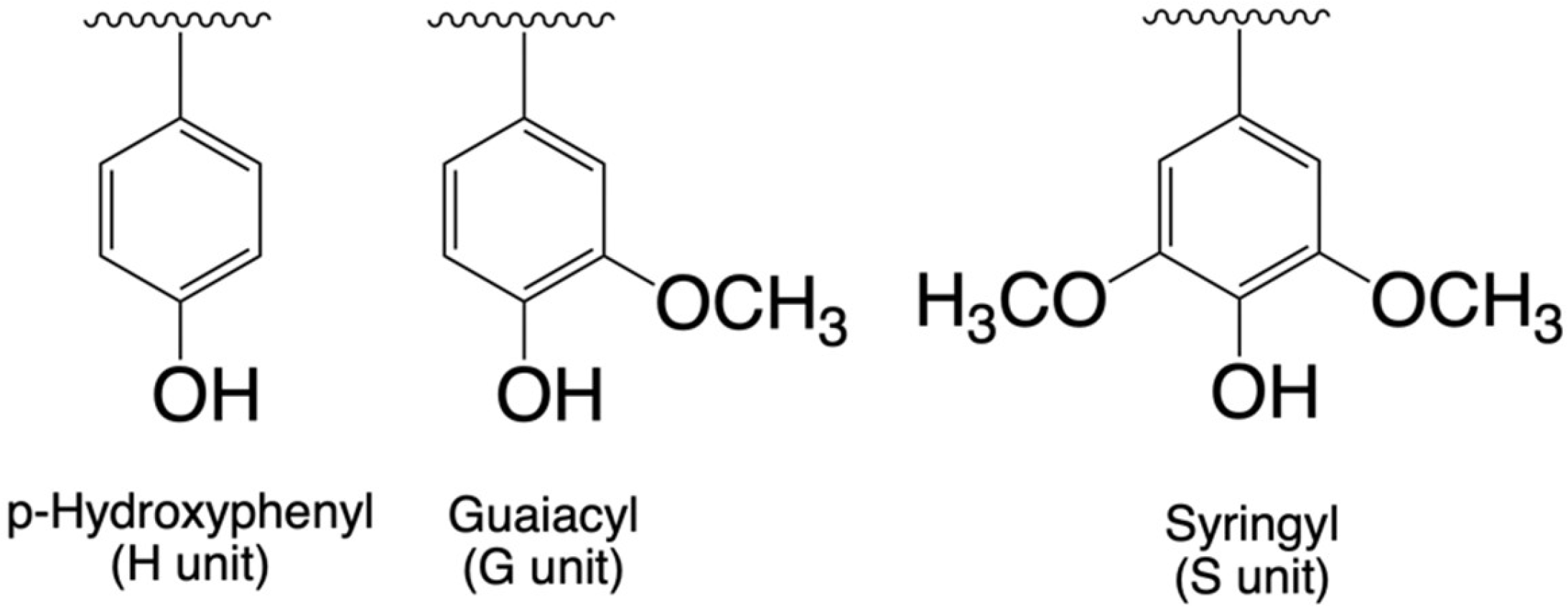
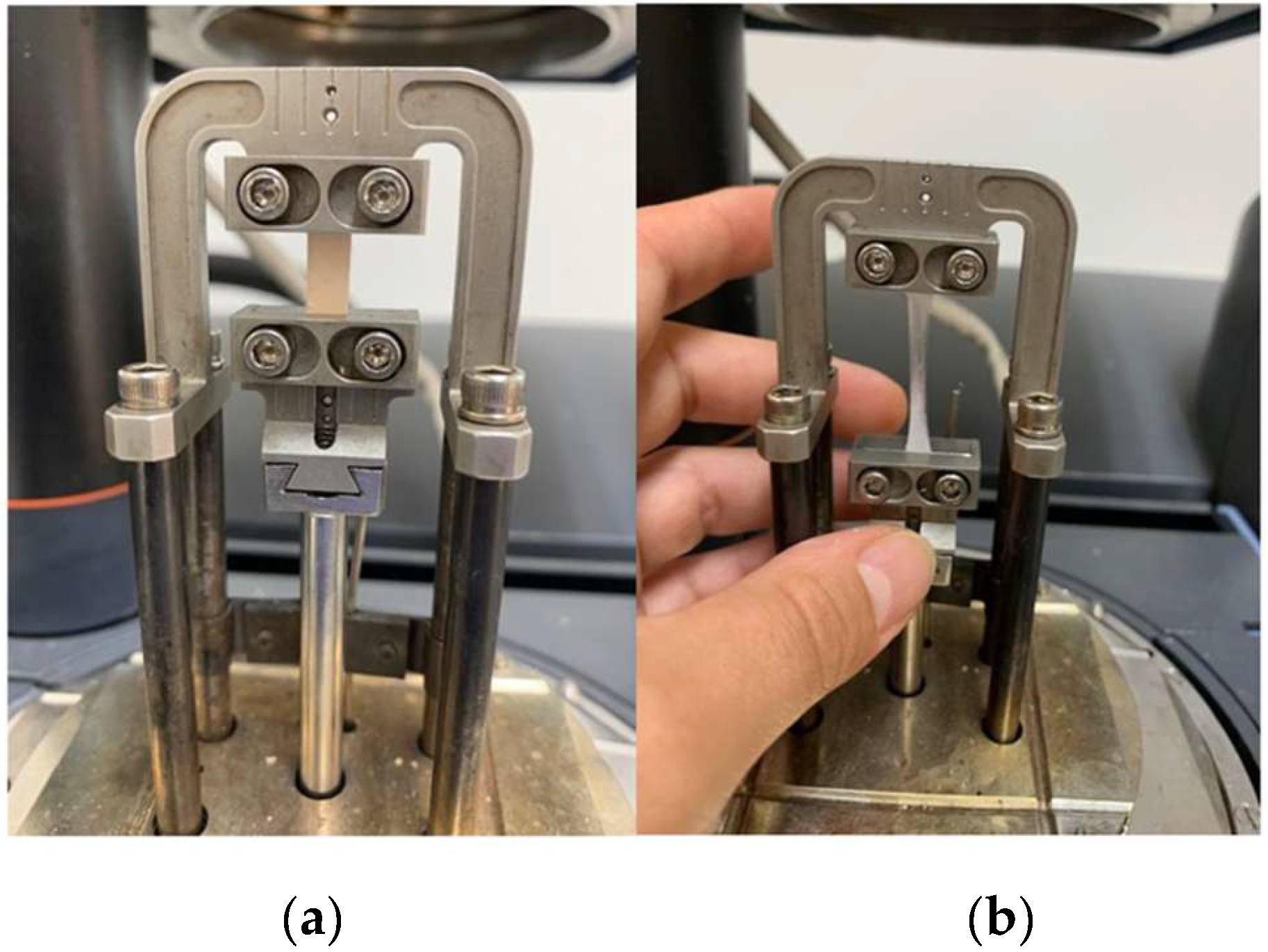

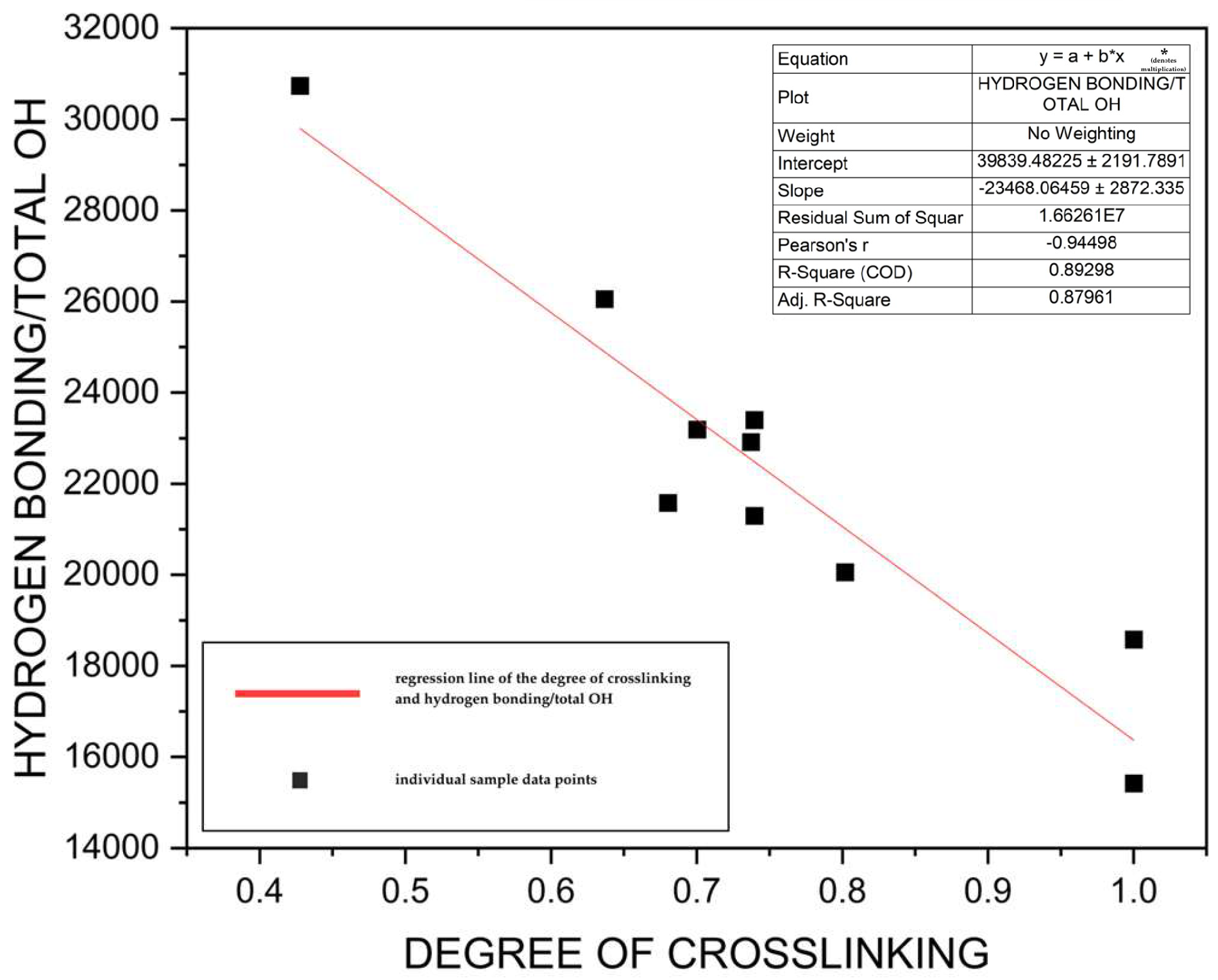


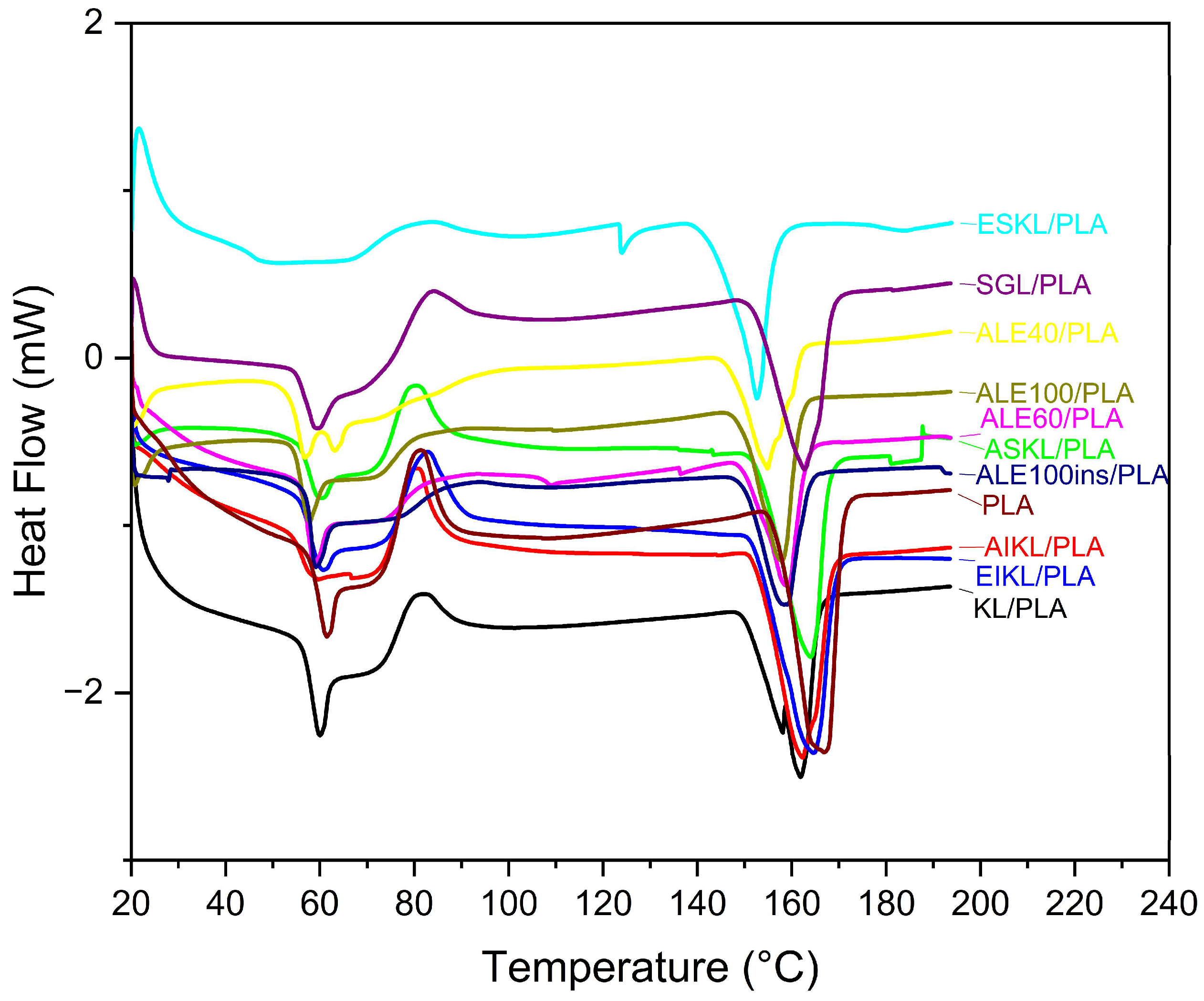
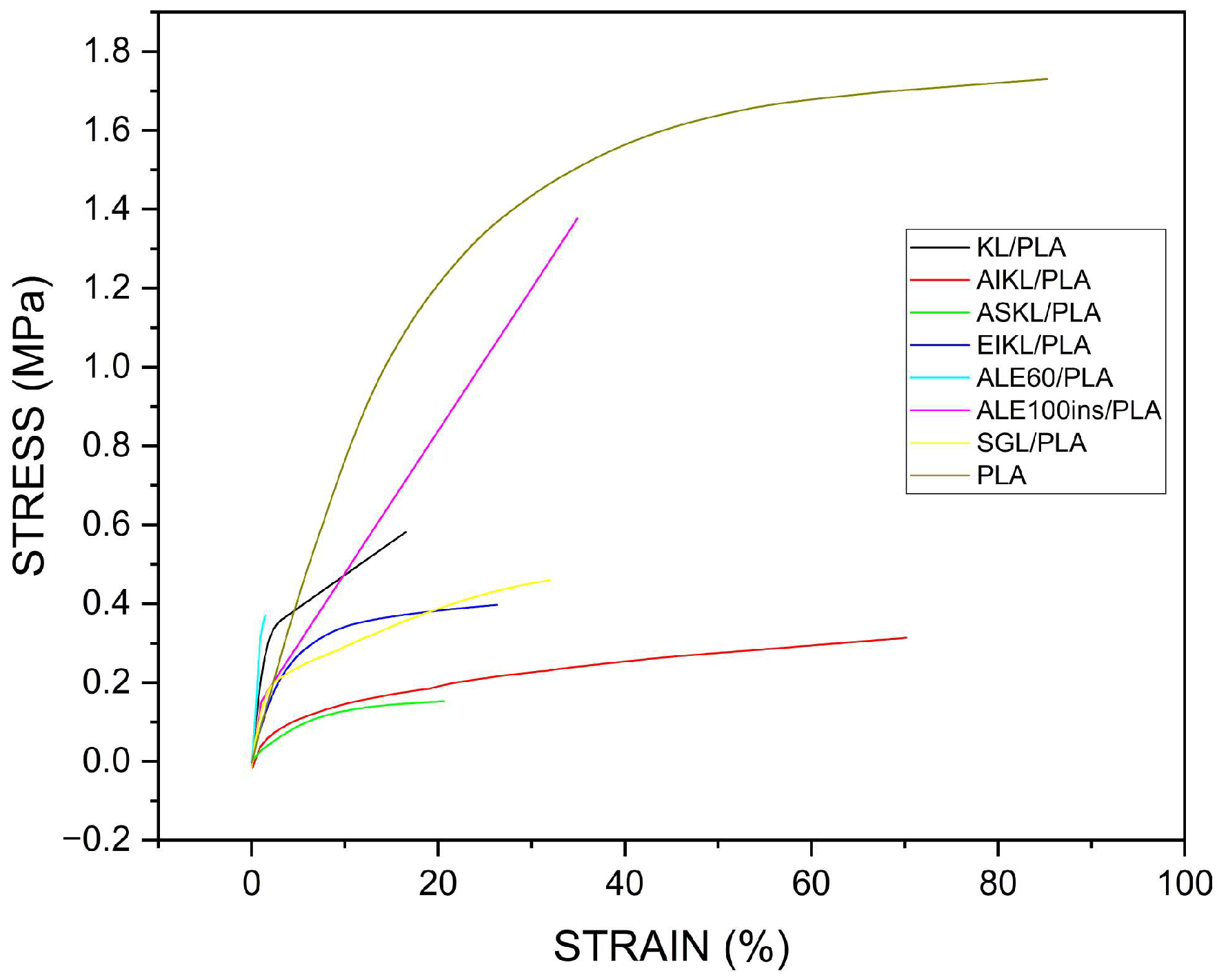
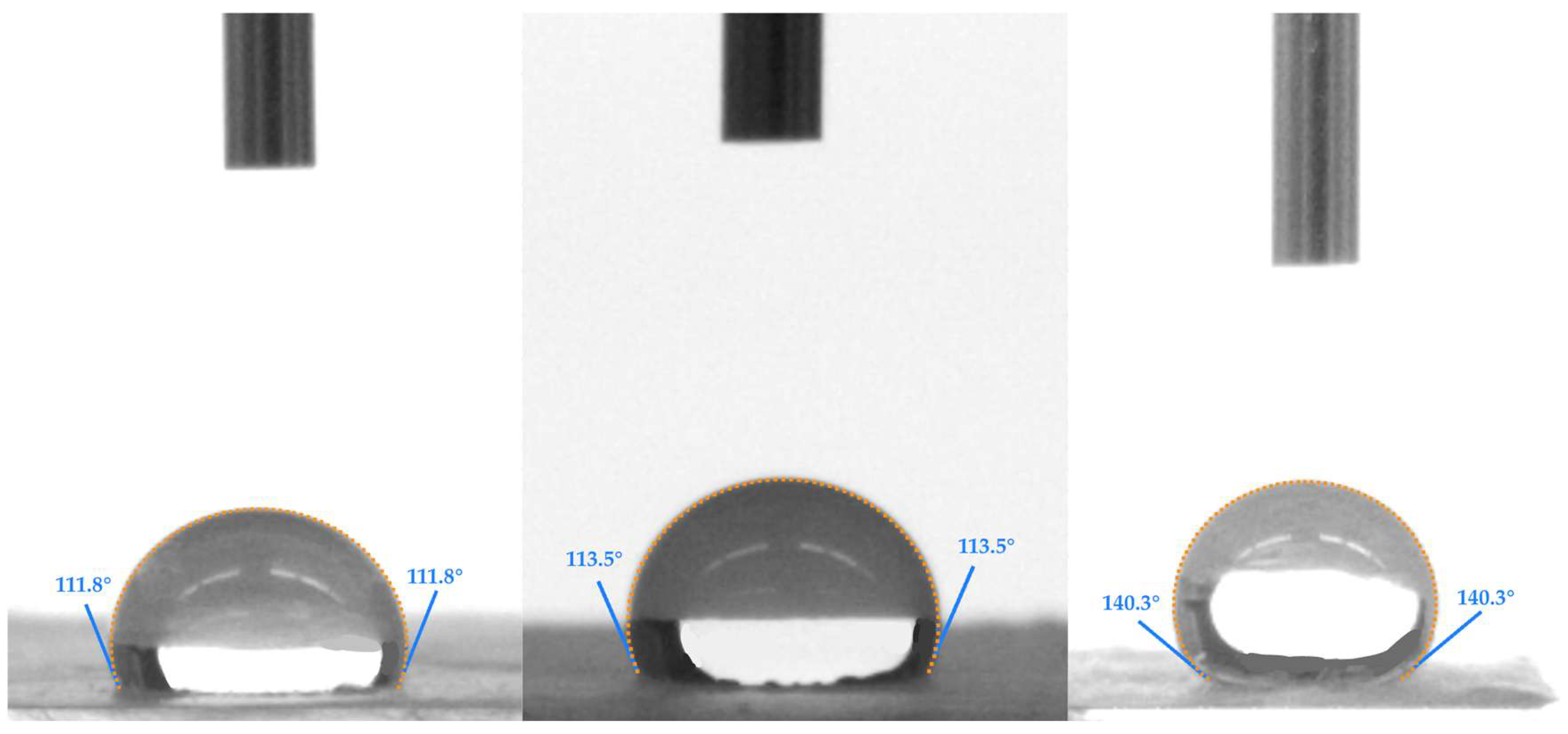

| KL | AIKL | ASKL | EIKL | ESKL | ALE40 | ALE60 | ALE100 | ALE100INS | SGL | |
|---|---|---|---|---|---|---|---|---|---|---|
| Biomass Source | softwood | softwood | softwood | softwood | softwood | hardwood | hardwood | hardwood | hardwood | switchgrass |
| Isolation Method | Kraft lignin as received | Acetone-Insoluble Kraft Lignin | Acetone-Soluble Kraft Lignin | Ethanol-Insoluble Kraft Lignin | Ethanol-Soluble Kraft Lignin | Alcell, soluble in 40% EtOH | Alcell, soluble in 60% EtOH | Alcell, soluble in 100% EtOH | Alcell, soluble in 100% EtOH | Co-Solvent Enhanced Lignocellulosic Fractionation |
| S/G Ratio | 0.33 | 0.42 | 0.23 | 0.53 | 0.29 | 1.46 | 1.30 | 1.49 | 1.59 | 0.25 |
| Fiber Label | KL/PLA | AIKL/PLA | ASKL/PLA | EIKL/PLA | ESKL/PLA | ALE40/PLA | ALE60/PLA | ALE100/PLA | ALE100INS | SGL/PLA |
| KL/PLA | AIKL/PLA | ASKL/PLA | EIKL/PLA | ESKL/PLA | ALE40/PLA | ALE60/PLA | ALE100/PLA | ALE 100INS/PLA | SGL/PLA | PLA | |
|---|---|---|---|---|---|---|---|---|---|---|---|
| Conductivity (μS/cm) | 20.40 ± 1.69 | 18.38 ± 2.07 | 23.03 ± 2.76 | 14.90 ± 1.47 | 27.07 ± 2.10 | 21.35 ± 2.62 | 12.41 ± 1.15 | 9.31 ± 0.75 | 7.17 ± 1.28 | 16.33 ± 0.82 | 1.57 ± 0.37 |
| Fiber Label | Tg (°C) | Tcc (°C) | Tm (°C) | Enthalpy of Fusion (J/g) | Ultimate Tensile Strength (MPa) | Young’s Modulus (MPa) | Elongation at Break (%) | Average Water Contact Angle (°) | Antioxidant Activity (%) | Average Fiber Diameter (μm) |
|---|---|---|---|---|---|---|---|---|---|---|
| KL /PLA | 57 ± 0.3 | 79 ± 0.3 | 151 ± 0.3 | 26.07 ± 16.32 | 0.37 ± 0.05 | 0.19 ± 0.04 | 7.75 ± 6.22 | 131.37 ± 4.56 | 55.21 ± 1.96 | 1.38 ± 0.34 |
| AIKL /PLA | 56 ± 1.7 | 73 ± 0.5 | 153 ± 0.3 | 35.01 ± 14.63 | 0.23 ± 0.09 | 0.07 ± 0.03 | 39.66 ± 21.83 | 114.47 ± 1.86 | 55.25 ± 1.59 | 1.32 ± 0.44 |
| ASKL /PLA | 56 ± 1.2 | 73 ± 0.3 | 154 ± 1.1 | 32.96 ± 9.17 | 0.15 ± 0.02 | 0.03 ± 0.00 | 17.34 ± 4.08 | 126.72 ± 1.14 | 56.46 ± 1.61 | 0.87 ± 0.63 |
| EIKL /PLA | 57 ± 0.8 | 75 ± 1.6 | 154 ± 1.8 | 37.48 ± 2.53 | 0.38 ± 0.11 | 0.11 ± 0.01 | 18.49 ± 5.55 | 125.66 ± 7.06 | 56.54 ± 1.17 | 1.12 ± 0.43 |
| ESKL /PLA | 43 ± 1.62 | 68 ± 0.42 | 143 ± 3.66 | 25.84 ± 9.18 | * | * | * | 110.62 ± 2.30 | 47.15 ± 1.56 | 1.33 ± 0.36 |
| ALE40 /PLA | 56 ± 4.4 | 77 ± 5.9 | 150 ± 3.0 | 18.48 ± 3.56 | * | * | * | 122.09 ± 6.52 | 33.66 ± 1.16 | 1.37 ± 0.45 |
| ALE60 /PLA | 56 ± 0.6 | 74 ± 0.7 | 152 ± 2.3 | 18.45 ± 6.14 | 0.35 ± 0.17 | 0.25 ± 0.08 | 1.33 ± 0.22 | 138.67 ± 4.37 | 32.90 ± 1.15 | 1.44 ± 0.23 |
| ALE100 /PLA | 55 ± 0.9 | 73 ± 1.3 | 151 ± 1.3 | 21.63 ± 5.18 | * | * | * | 115.76 ± 2.75 | 27.41 ± 1.64 | 1.36 ± 0.34 |
| ALE100 INS/PLA | 57 ± 0.3 | 78 ± 0.8 | 151 ± 0.6 | 19.53 ± 5.33 | 0.18 ± 0.15 | 0.23 ± 0.14 | 13.56 ± 15.16 | 136.16 ± 5.10 | 21.12 ± 1.70 | 1.37 ± 0.48 |
| SGL /PLA | 56 ± 1.5 | 74 ± 2.1 | 153 ± 1.6 | 31.22 ± 0.74 | 0.44 ± 0.39 | 0.15 ± 0.02 | 26.36 ± 6.32 | 130.26 ± 2.63 | 37.05 ± 0.86 | 0.88 ± 0.23 |
| PLA | 58 ± 0.3 | 74 ± 1.0 | 158 ± 0.7 | 41.52 ± 9.42 | 1.70 ± 0.36 | 0.10 ± 0.02 | 74.45 ± 10.54 | 110.75 ± 2.98 | 29.46 ± 7.86 | 0.49 ± 0.29 |
Disclaimer/Publisher’s Note: The statements, opinions and data contained in all publications are solely those of the individual author(s) and contributor(s) and not of MDPI and/or the editor(s). MDPI and/or the editor(s) disclaim responsibility for any injury to people or property resulting from any ideas, methods, instructions or products referred to in the content. |
© 2025 by the authors. Licensee MDPI, Basel, Switzerland. This article is an open access article distributed under the terms and conditions of the Creative Commons Attribution (CC BY) license (https://creativecommons.org/licenses/by/4.0/).
Share and Cite
Szlek, D.B.; Fan, E.L.; Frey, M.W. Multifunctional, Flexible, Electrospun Lignin/PLA Micro/Nanofiber Mats from Softwood Kraft, Hardwood Alcell, and Switchgrass CELF Lignin. Fibers 2025, 13, 129. https://doi.org/10.3390/fib13090129
Szlek DB, Fan EL, Frey MW. Multifunctional, Flexible, Electrospun Lignin/PLA Micro/Nanofiber Mats from Softwood Kraft, Hardwood Alcell, and Switchgrass CELF Lignin. Fibers. 2025; 13(9):129. https://doi.org/10.3390/fib13090129
Chicago/Turabian StyleSzlek, Dorota B., Emily L. Fan, and Margaret W. Frey. 2025. "Multifunctional, Flexible, Electrospun Lignin/PLA Micro/Nanofiber Mats from Softwood Kraft, Hardwood Alcell, and Switchgrass CELF Lignin" Fibers 13, no. 9: 129. https://doi.org/10.3390/fib13090129
APA StyleSzlek, D. B., Fan, E. L., & Frey, M. W. (2025). Multifunctional, Flexible, Electrospun Lignin/PLA Micro/Nanofiber Mats from Softwood Kraft, Hardwood Alcell, and Switchgrass CELF Lignin. Fibers, 13(9), 129. https://doi.org/10.3390/fib13090129








